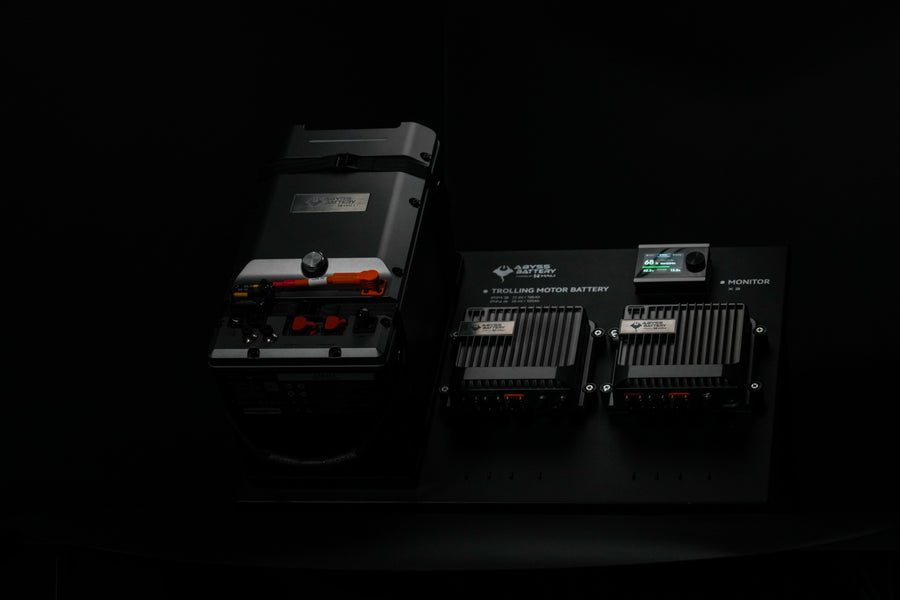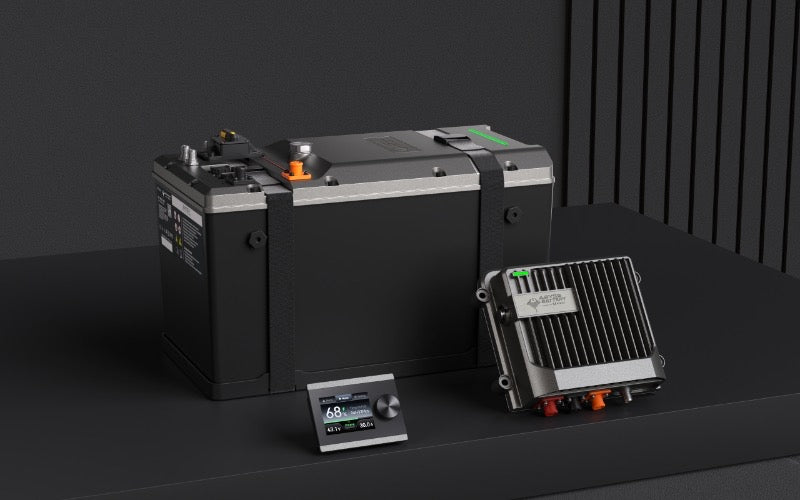How To Properly Jump-Start Your Marine Battery

There are many things you can do when taking your boat out on the water. Fishing, skiing, or just going outdoors to enjoy the weather are only a few of the activities that boaters take part in.
With so much to do, it’s easy to forget to check your battery. Unfortunately, if you let it die, you could be stranded without anyone to offer help. Learning how to properly jump-start your marine battery will give you peace of mind when you’re out boating.
Secure the Vessel
Before doing any maintenance, you should ensure the boat is at a complete stop and adequately secured so that it doesn’t move. Having a stable environment for doing work will ensure you do everything correctly and don’t make mistakes.
Tether to a dock or a secure place on shore. If you’re out on the water, put down an anchor to avoid rocking or swaying that could cause you to accidentally drop or damage a component.
Consult the Manual
Knowing your boat’s safety manual inside and out will give you a clear picture of what needs to be done when working on the battery. Manuals are great sources of information regarding safety and care practices that will keep you from hurting yourself or your vessel while jumping the battery.
Since each boat engine is manufactured differently, knowing what you’re dealing with beforehand is essential. Don’t mess around with internal components if you aren’t sure what they do. Stick to the instructions and follow any safety procedures to the letter.
Ask for Help
If you aren’t entirely sure about how to go about jumping your marine battery, there’s no harm in asking for help. If there’s someone around to give you a hand, asking for help can save time and get you back on the water quicker. However, there are some things to remember when dealing with a dead battery.
Boaters are helpful when they see someone in need, but remember to use the proper etiquette. Be safe when flagging down other boaters. Try to stay out of their way and offer assistance so that you can learn how to care for the vessel yourself.
Turn Off All Electrical Appliances
It can be dangerous to charge your marine battery if electrical systems are still online. You should make sure you turn off any electrical components before working on them to avoid electric shock or rupturing internal components.
A marine battery switch can make cutting electricity to your engine much more straightforward. It’s also helpful for preventing ghost power from draining the battery while it’s not in use. Some boats may simply have a circuit breaker that you can shut off; this is yet another reason that knowing your vessel before going out is essential.
Test the Voltage
If the battery is dead, you probably won’t be able to jump it. If you do so, you could end up damaging your alternator and having a more expensive fix on your hands. This makes it especially important to check your voltage before attempting a jump.
Have a multimeter handy so that you can test the battery for charge. Anything less than 11.8 volts means it’s dead and probably needs to be replaced. Most standard marine batteries need a voltage of at least 12.5 to keep their charge.
Get a Set of Marine Jumper Cables
In some areas, no one may be around to tow you to shore. You should be prepared ahead of time in case you have to do repairs yourself. Regular jumper cables don’t work on deep-cycle batteries, so you must invest in a specialized set of cables for your boat.
Finding a quality set of marine jumper cables will prepare you for the worst. Marine-grade cables are corrosion-resistant, making them ideal for wet environments where other types of metal would develop rust.
Use the Proper Amperage
Whether you’re using your own jumpers or someone else’s, ensuring they have the proper amperage before hooking them up to your motor is essential. Too much or too little can damage your equipment, making it less than ideal for getting out of a jam.
A 36-volt lithium trolling motor has a much longer cycle time than traditional marine batteries, and you can expect them to last up to eight hours on a full charge. The proper amperage rating for your jumper cables will ensure you get the maximum life out of your cells.
Connect the Cables
Now that you’re ready to charge your battery, there are a couple of things to remember. You must connect the cables in the correct order if you don’t want to damage your marine battery. Red should go to positive and black to negative.
Make sure the terminals are clean before making a connection. Corrosion, dirt, and debris can create sparks or prevent proper charging. Charge times can depend on many factors, including the temperature and age of the cell.
Start the Boat
Once the battery is charged, you can try turning the boat over. Some batteries have an LED indicator to tell you when it’s ready for use. Remember to unplug your cables first. The black should come off first, then the red, in the opposite order that they went on.
Starting the engine should do the trick as long as the battery still has life. If it still doesn’t work, it may be time to purchase a new one.
Get the Battery Professionally Tested
Once you reach shore, you should have the battery tested to ensure it can still hold a charge. You don’t want to be stranded again because you relied on a battery that was at the end of its life. Doing regular inspections before and after each outing will help you avoid a similar situation in the future.
Take your time and inspect the battery to ensure it can still operate correctly. If the battery is old, corroded, or damaged, it’s probably time for a new one.
Make Sure You’re Comfortable Working on Your Boat
Sometimes, you might run into an issue you don’t know how to fix. Having a backup solution to get to shore is crucial if you can’t get your battery started.
Knowing how to properly jump-start your marine battery will ensure you’re fully prepared before going out on the water.






Leave a comment